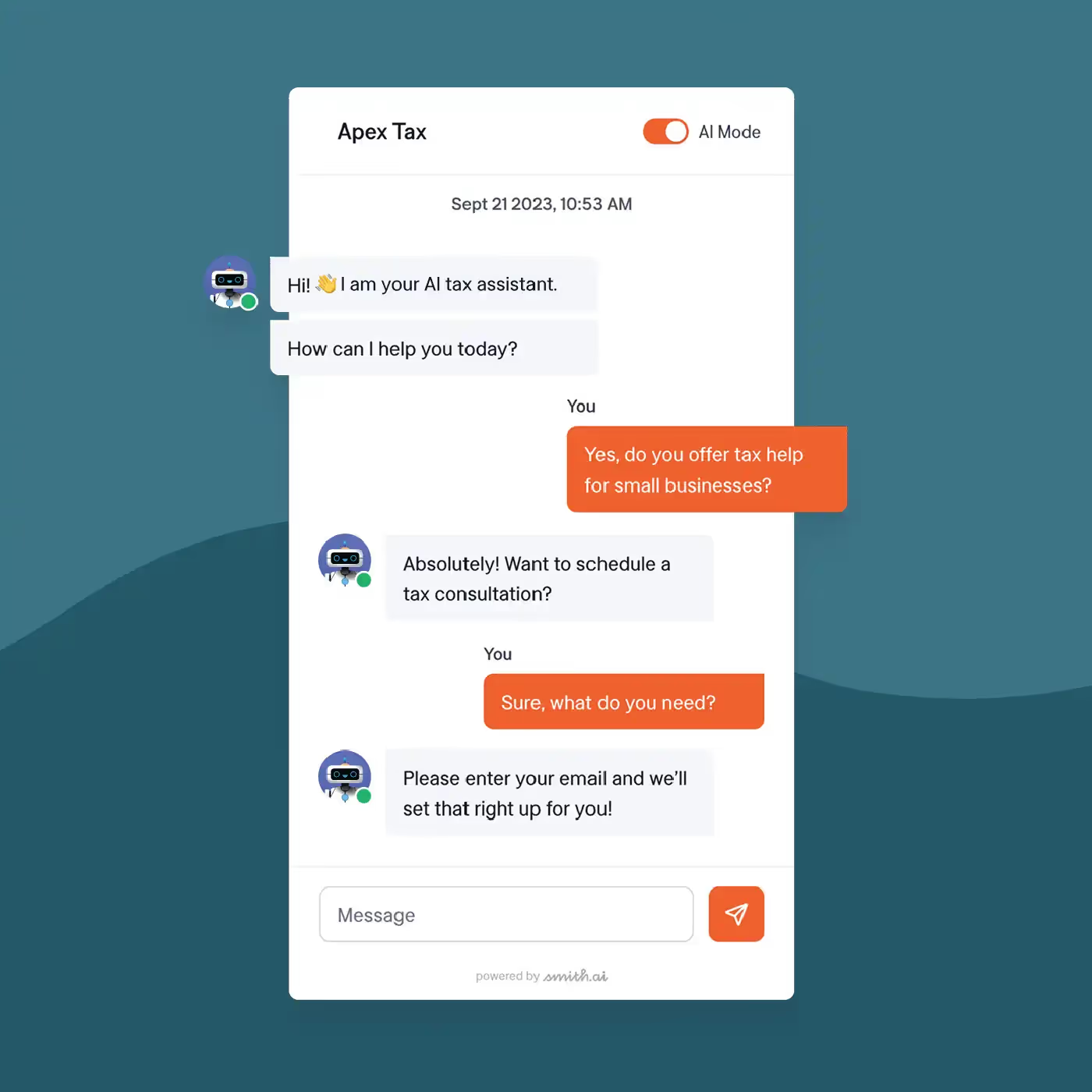Software to Streamline Your Junk Removal Business Operations
Software to Streamline Your Junk Removal Business Operations

Your phone rings at 7 PM while you're finally sitting down to dinner. A potential customer needs that couch hauled away, but you're knee-deep in paperwork as is. By the time you call back, they've booked with your competitor who answered immediately.
While you're scrambling through handwritten route sheets, competitors book jobs through streamlined business management systems and get paid before reaching the next stop.
The right combination of software tools eliminates this chaos through four core operational areas: customer communication, scheduling and dispatch, billing and payments, and business analytics.
Labor costs typically account for up to 30% of operating budgets, so even small efficiency gains translate directly into profit per job. When these systems work together, your junk removal business runs like a well-oiled machine.
Why You Need Software for Your Junk Removal Business
Are you drowning in analysis paralysis while your competitors book more jobs? Your crews navigate traffic nightmares while calculating weight-based pricing for everything from mattresses to construction debris.
Generic business software treats these challenges like afterthoughts. Standard scheduling apps choke on variable pricing calculations.
Basic accounting platforms can't handle photo estimates or integrate with disposal tracking requirements.
Your biggest operational challenges that need software solutions:
- Missed calls during jobs - Potential customers hang up and call competitors when you can't answer while loading trucks
- Scheduling disasters - Double-bookings create angry customers and crew overtime costs that eat profits
- Payment delays - Waiting weeks for checks creates cash flow problems when you have daily fuel and labor expenses
- Compliance headaches - Manual disposal tracking can lead to regulatory fines exceeding $10,000.
- Route inefficiency - Poor planning wastes fuel and creates unnecessary overtime, which erodes margins.
Write down your top three pain points from this list. Hunt for software solutions that tackle them head-on, not platforms loaded with features you'll never use.
Most successful junk removal businesses utilize a combination of specialized tools rather than trying to find a single platform that does everything.
How to Choose the Right Software Solution for Your Junk Removal Business
Think of building your tech stack like assembling the perfect crew. You need reliable tools that can handle today's workload and scale when your business doubles.
Breaking this decision into five clear steps prevents costly mistakes and ensures your chosen solutions grow with your operation.
Identify Your Business's Unique Operational Needs
Start with the fundamentals: crew count, truck capacity, service types, and the average daily number of jobs. Do you handle single-item pickups, estate cleanouts, or construction debris? Each service type requires different scheduling and pricing capabilities.
Document every bottleneck that costs you money. Are crews sitting idle due to scheduling conflicts? Do you spend evenings manually creating invoices instead of planning tomorrow's routes? List these pain points and circle the ones that directly impact your bottom line.
Check your current business systems because seamless integration matters. If QuickBooks handles your accounting or you're using any CRM for lead tracking, your new tools need to connect smoothly. Look for open APIs to avoid double data entry nightmares.
Plan 18 months ahead. Adding a second location means you need multi-location support now, not after a painful migration later.
Prioritize Must-Have Features Based on Pain Points
Transform each operational headache into a specific feature requirement. Missed calls demand 24/7 customer communication solutions. Scheduling conflicts need real-time calendars with conflict alerts. Rising fuel costs necessitate route optimization tools that minimize unnecessary mileage.
Create a simple priority matrix with High, Medium, and Low categories to keep essentials front and center. Customer communication and mobile field access rank High for most junk removal businesses. Custom branding features might be Low priority unless you're competing in premium markets.
Consider which problems cost you the most money. Missed calls during busy periods represent immediate lost revenue that compounds daily.
Set a Budget and Consider Integration Costs
Calculate total ownership costs beyond monthly subscriptions. Include setup fees, per-user licenses, integration costs, and training time. Use this ROI formula: Net Benefit ÷ Investment Cost × 100.
Comprehensive ROI calculations capture both direct savings, such as reduced administrative time, and indirect benefits, like improved customer retention resulting from better service.
Budget for multiple tools rather than expecting one platform to handle everything perfectly. Most successful operations use 3-5 specialized tools that integrate well together.
Test Solutions During Your Busiest Periods
Take advantage of free trials by creating scenarios that mirror daily chaos. Book last-minute jobs, handle mid-shift route changes, and process customer payments onsite. Test customer communication during peak call times.
Ask vendors about integration limitations, mobile performance in low-signal areas, and typical setup timelines. Get specific answers, not marketing fluff.
Involve your dispatcher and crew leads in evaluations. They'll spot deal-breakers that escape desk-bound reviews. Score each solution objectively so emotions don't override performance during decision time.
Plan for Seamless Implementation and Team Training
Test vendor support strength before committing. Submit support tickets during trials and time their responses. Quality implementation includes data migration assistance, system configuration help, and comprehensive team training.
Look for vendors with experience serving field service businesses. They understand operational workflows better than generic software companies. Regular updates signal active development, while stagnant platforms create feature gaps over time.
Features to Look for in Software for Junk Removal Business Operations
Focus on solutions that directly impact your bottom line rather than flashy features that impress during demos. Your tech stack should eliminate daily friction that eats profits and frustrates customers.
24/7 Customer Intake and Lead Qualification
Your phone rings during jobs when crews can't answer. The AI Receptionist from Smith.ai captures these leads automatically, asks qualifying questions about item types and quantities, provides preliminary pricing, and schedules appointments directly into your calendar. This prevents revenue loss when potential customers call competitors because you missed their call while loading a truck.
Weight and Volume-Based Pricing Calculators
Standard pricing models don't work for junk removal. Your software needs dynamic pricing that accounts for item weight, disposal fees, and local dump charges. Look for systems that let customers upload photos for accurate estimates before you waste gas on site visits.
Real-Time GPS Tracking with Customer Updates
Software should automatically send ETA updates based on actual truck location and handle route changes when previous jobs run long. Software like Samsara tracks your fleet with real-time GPS data. This transparency reduces no-shows and angry customers wondering where their scheduled crew went.
Mobile Photo Documentation and Digital Signatures
Mobile photo apps must capture timestamped photos and collect digital signatures that sync to customer records instantly. This documentation protects you from damage claims and provides proof of work completion for insurance purposes.
Disposal Tracking and Compliance Reporting
Software should automatically generate disposal manifests, track recycling versus landfill percentages, and produce compliance reports for regulatory inspections. Automated compliance documentation prevents costly fines that can exceed $10,000 for improper disposal records.
Implementation Strategies for Maximum ROI
Software implementation succeeds or fails based on people's adoption, not technical features. Your crew's buy-in determines whether new tools become productivity boosters or expensive digital paperweights.
Start with Customer Communication
Implement customer communication solutions first because they provide immediate ROI without disrupting field operations. An AI Receptionist from Smith.ai can be active within 24 hours, immediately capturing leads you'd otherwise lose to competitors.
Train your existing staff on new customer communication workflows while field operations continue normally. This approach builds confidence before tackling more complex operational changes.
Roll Out Field Tools Gradually
Begin with one truck or crew for mobile and scheduling solutions. Test during busy periods to identify workflow issues before company-wide deployment. Track metrics like jobs completed per day and customer satisfaction scores.
Configure systems to match your actual workflows, not software defaults. Customize service categories, pricing rules, and automated messaging to reflect how your business really operates.
Integrate Financial Systems Last
Once scheduling and field operations run smoothly, connect the billing and payment systems. This sequence prevents revenue disruption while ensuring data flows correctly between platforms.
Plan for temporary parallel systems during transitions. Keep your old billing method active until the new system proves reliable for at least two full billing cycles.
Monitor Performance and Optimize Continuously
Review dashboard metrics weekly during the first month, then monthly thereafter. Track both efficiency gains, like reduced administrative time, and revenue improvements, like increased job completion rates.
Celebrate wins with your team as performance improves. Share specific success stories like "We completed 15% more jobs last week thanks to better routing" to maintain momentum.
Measuring Success and ROI
Calculate success through clear metrics that tie directly to profitability. Track job completion rates, average revenue per job, customer satisfaction scores, and administrative time savings.
For example, if better customer communication increases your booking rate from 60% to 75% of inquiries, that 15% improvement on 100 monthly calls means 15 additional jobs. At $200 average job value, that's $3,000 additional monthly revenue.
Use simple before-and-after comparisons for the first 90 days. Document baseline metrics before implementation, then measure the same data points monthly to track improvement trends.
Most junk removal businesses see ROI within 60-90 days when focusing on customer communication and scheduling efficiency first.
Never Miss Another Lead While Your Crews Are Hauling
Streamlining your junk removal operations requires specialized tools that integrate well together. Start with customer communication for immediate ROI, then add scheduling, mobile payments, and financial software as your team adapts.
Why Smith.ai is Essential for Junk Removal Businesses
Your phone rings while you're carrying a refrigerator down narrow stairs or navigating a loaded truck through traffic. Potential customers need estate cleanouts completed before house sales or construction debris removed before inspections.
Smith.ai's AI Receptionist handles these important moments by capturing leads during busy periods, qualifying prospects immediately, providing preliminary pricing, and scheduling appointments directly into your calendar.
Our service works around the clock when customers are home planning cleanouts. Schedule a free consultation with Smith.ai today and discover how our AI Receptionist can capture every lead while you focus on helping customers reclaim their space.
Take the faster path to growth. Get Smith.ai today.
Key Areas to Explore
Technical Implementation Terms
Voice user interface (VUl) design
Speech recognition integration
Text-to-speech optimization
API connectivity and webhooks
Real-time data synchronization

Your submission has been received!













.svg)



